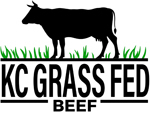Description
Brisket, which comes from the breast of the cow, is one of the least tender cuts of beef. However, when braised, smoked, or slowly roasted, it’s rendered soft and satisfying with incredible flavor. With two pound briskets you will be cooking them for about 4-6 hours.
Seasoning
About 2 hours before you start the cooking, lather the brisket with spicy mustard or regular mustard. Then coat the brisket with equal parts of kosher salt and coarsely ground black pepper (I add red pepper flakes to give it a little heat).
Cooker
This is a really important part. You want to cook the brisket on 200 degrees with smoke (with a grain fed beef you usually set the cooker at 250. With grass-fed we need to go slower). People will use an electric smoker or pellet grill. It can be done on a regular smoker but it’s difficult to keep it a steady 200 degrees.
Smoke
Cooking a brisket is a two-phase process. In the first, you set the bark and flavor the meat with wood smoke. This produces the smoke ring, a much-admired reddish band just below the surface. The second phase of cooking finishes rendering the fat and converting the tough collagen into tender gelatin.
When using a kettle grill, water smoker or kamado-style cooker, fuel it with lump charcoal, adding hardwood chunks to generate wood smoke. Texans favor oak and mesquite, while Kansas Citians like to use apple or hickory. If using chips, soak them in water for 30 minutes, then drain, to slow combustion. Add the wood gradually, a couple of chunks every hour: You want to kiss the meat with smoke, not smother it.
Temperature
Try to keep your smoker as consistent as possible at a temperature of 225 degrees. Check your brisket with a temperature checking device. I would recommend getting a wireless one so you don’t have to open your smoker to check the internal temperature each time. The ones that work off of an RF frequency. It reaches a lot farther than the bluetooth ones. Here is my favorite.
The Wrap
The second phase of cooking begins when the brisket reaches an internal temperature of 165 to 170 degrees. This is the point at which most brisket masters wrap the meat in butcher paper or aluminum foil. This guarantees a tender brisket, but sometimes results in a steamed texture reminiscent of pot roast.
You can order unlined butcher paper online, or use parchment paper; just don’t use plastic-lined butcher paper.
The Test
When it comes to determining whether a brisket is done, the pros use the jiggle test: Grab the meat by one end and shake it. A properly cooked brisket will quiver like Jell-O. Or use the bend test: Wearing insulated food gloves, grab the brisket at both ends and lift. It should bend or sag easily in the middle.
I use an instant-read meat thermometer, with a target temperature of 200 to 205 degrees.
The Rest
After the better part of a day spent cooking, you’ll probably want to eat your brisket right away. But resting it in an insulated cooler for an hour or two improves its texture and tenderness immeasurably. Keeps it wrapped in the butcher paper. You should rest it in the cooler until the internal temperature falls to about 142 degrees.
When you cut it to serve, make sure you cut across the grain about the thickness of a pencil. Enjoy!


